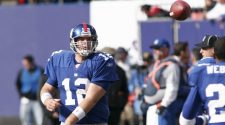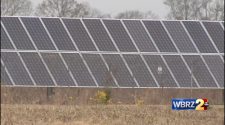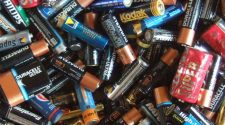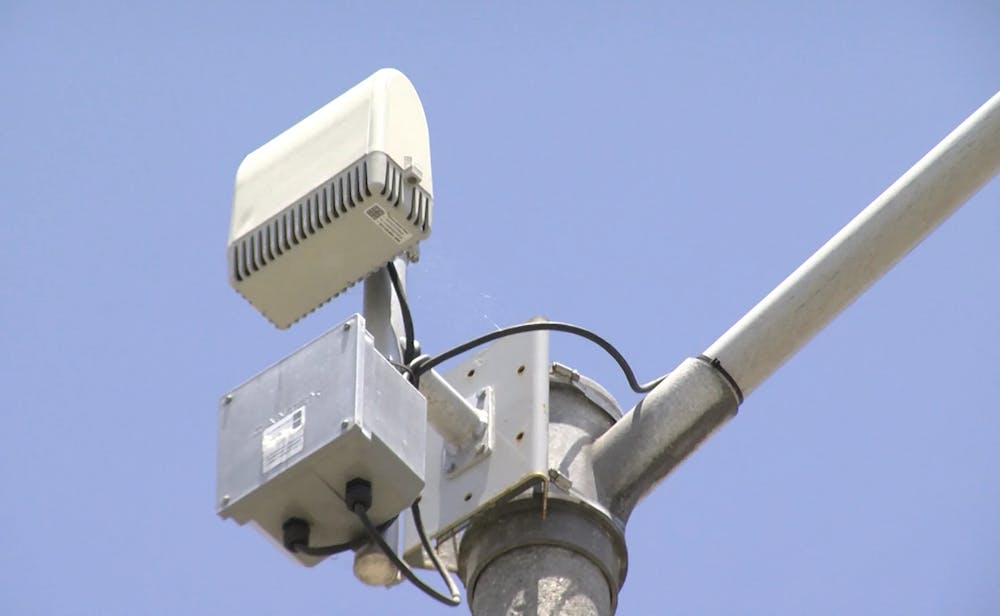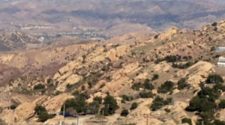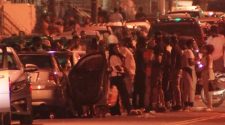Community members felt comfortable approaching Jerry Christian, pastor at Russell Memorial CME Church, to voice concerns about racial profiling with the implementation of ShotSpotter. Soon Christian, Divinity School ‘22, found himself echoing those same fears at a community forum in September.
ShotSpotter is an artificial intelligence technology that will be placed in neighborhoods with high gun violence rates in Durham, where most residents are people of color. The technology functions by using acoustic sensors and AI to identify the sound of gunshots and sending the location of the shot to law enforcement officials.
In April, ShotSpotter entered a partnership with the Durham Police Department to set up a network of sensors across three square miles of neighborhoods with historically high gun violence rates. The pilot run, which is projected to start on Nov. 15, will last a year and will cost the city nearly $200,000.
But Christian worries that if police presence rises as a result of more calls to the areas with ShotSpotter sensors, racial profiling will become a more prevalent issue.
He fears that his son, who is 16, Black, and six feet tall, may be caught at the wrong place at the wrong time and mistaken for a suspect.
To address concerns like these, McDouglas Terrace community members and representatives from the Durham Police Department convened a community forum in Burton Elementary School on Sept. 26 to discuss the establishment of ShotSpotter in Durham.
According to police representatives at the forum, the goal of the technology is to alert police to move to the exact location the shots were heard in in order to cut down on their response times.
With ShotSpotter, loud sounds are visually reflected on a graph to differentiate gunshots from noises like jackhammers or fireworks. Additionally, the alerts are verified by people trained to identify the sound of gunshots. The technology also allows police to see the number of rounds fired and where each shot occured to determine if the shooter is mobile.
“Our number one goal is public health,” Jason Schiess, an analytical services manager with the Durham PD, told The Chronicle. “If we get this information more quickly and with greater precision in terms of location accuracy, that increases our likelihood that we’re going to find someone who’s in need of medical attention, specifically emergency medical attention.”
Schiess said that this tool also has the potential to collect evidence faster and reduce gun violence. The three square miles area in east and southeast Durham was chosen because it represents only 2.7% of the total landmass of the city, but is where one of three gunshot wounds occur.
Currently, 80% of gunshots go unreported to the police nationwide, according to Ron Teachman, director of public safety solutions for ShotSpotter. Durham PD hopes to reduce this rate by having sensors make the calls.
Christian believes that the technology can be useful for helping support the community because he recognizes how damaging gun violence can be on local families. He emphasized, however, that a caring relationship between police officers and community members is necessary to make the project work.
“[My son] just wants to be in a place where he doesn’t have to worry about gun violence, where he doesn’t have to worry about calling a friend next week … [then hearing] your friend is no longer here,” Christian said. “Even though we live in a nice neighborhood and nice family, we still are not exempt from the violence that goes on in the community.”
Teachman said that this tool does not exacerbate racial disparities in arrests. He noted that young Black men are the racial demographic with the greatest number of gunshot victims nationwide and said that ShotSpotter will help collect data that will contribute to research on how to address this issue.
Another concern raised at the meeting was the Durham Public School Board’s vote against the placement of sensors at six school campuses on Sept. 22.
DPS Board Chair Bettina Umstead said that the Board decided that ShotSpotter would not necessarily contribute to student safety, especially since the role of schools is to focus on preventative measures. Umstead said that a priority for DPS is to offer support systems for students’ social and emotional needs.
“I really do think addressing violence has to be a community effort,” Umstead told The Chronicle. “I think we have to come together to think creatively about ways that we’re going to support and prevent violence and figure out how we heal a lot of our communities.”
Teachman clarified that though DPS declined to place the sensors at school buildings, the schools proposed by ShotSpotter as potential locations are within the neighborhoods that sensors are already going to be set up.
Paul John, director of community engagement for ShotSpotter, addressed privacy concerns about the technology. He explained that ShotSpotter received consulting from the New York University School of Law and ultimately received positive feedback on the technology’s conservation of individuals’ privacy.
“We’re not sending the police anything but a captured snippet of gunshots one second before the gunfire one second after,” John said. “So we’ve taken great steps to protect privacy. We’re very confident … that we’re not invading privacy with capturing conversations or anything of that nature.”
Christian and Umstead said that gun violence is necessary to address in Durham, especially when effects can be so catastrophic, as long as mindful steps are taken along the way.
“When one goes through violence, all of us are affected,” Christian said. “So it’s a traumatic experience, especially for teenagers and children. But it’s also a traumatic experience for the community.”
Get The Chronicle straight to your inbox
Signup for our weekly newsletter. Cancel at any time.



